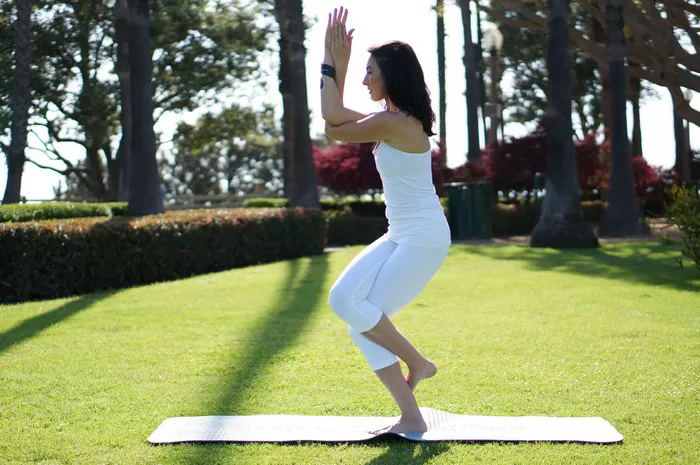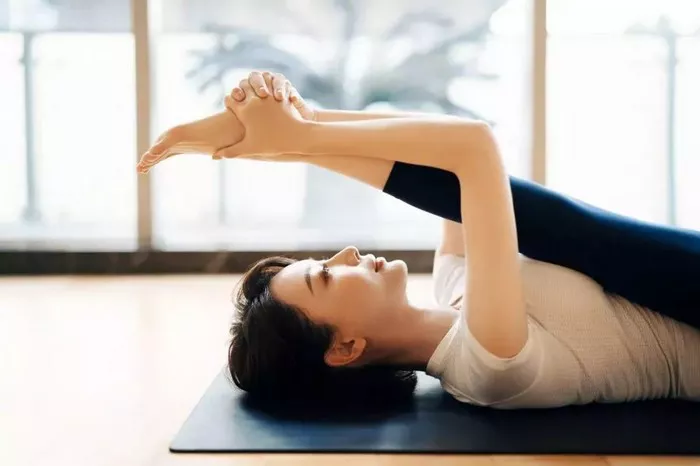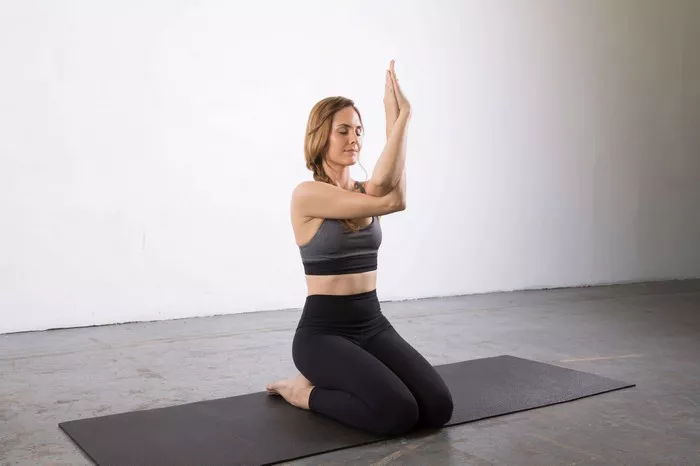Spondylosis, a term used to describe age-related degenerative changes in the spine, affects millions of people worldwide, causing pain, stiffness, and reduced mobility. As traditional medical interventions often focus on symptom management rather than addressing the root cause, many individuals seek alternative approaches to alleviate their spondylosis symptoms and improve their quality of life. Among these alternatives, yoga has gained significant attention for its potential therapeutic benefits. This article explores the efficacy of yoga as a complementary therapy for spondylosis, examining the underlying mechanisms, scientific evidence, and practical considerations.
Understanding Spondylosis:
Before delving into the role of yoga in managing spondylosis, it is essential to understand the condition itself. Spondylosis primarily affects the spine’s vertebral bones and intervertebral discs, leading to changes such as bone spurs, disc degeneration, and the thickening of ligaments. These changes can result in various symptoms, including neck or back pain, stiffness, muscle weakness, and radiating pain or numbness in the arms or legs. While spondylosis is often associated with aging, factors such as genetics, lifestyle choices, and repetitive movements or injuries can contribute to its development.
The Role of Yoga in Spondylosis Management:
Yoga, an ancient practice originating from India, combines physical postures (asanas), breathing techniques (pranayama), and meditation to promote holistic well-being. Proponents of yoga suggest that its therapeutic effects extend beyond the physical realm, encompassing mental, emotional, and spiritual aspects of health. When applied to spondylosis management, yoga offers several potential benefits:
1. Improved Spinal Mobility and Flexibility:
The gentle stretching and movement sequences characteristic of yoga asanas can help increase spinal flexibility and range of motion. By targeting specific muscle groups and joints, yoga poses aim to reduce stiffness and promote better alignment, potentially alleviating spondylosis-related discomfort.
2. Strengthening of Supportive Muscles:
Spondylosis often weakens the muscles that support the spine, contributing to instability and pain. Yoga practices incorporate strengthening exercises that target core muscles, back extensors, and postural muscles, which may help improve spinal stability and reduce strain on degenerated structures.
3. Pain Management and Relaxation:
Chronic pain is a common symptom of spondylosis, impacting individuals’ physical and emotional well-being. Yoga emphasizes mindfulness and relaxation techniques, such as deep breathing and meditation, which can help reduce stress levels and modulate pain perception. Additionally, certain yoga poses promote the release of endorphins, the body’s natural pain-relieving hormones, offering relief from discomfort.
4. Enhanced Body Awareness and Posture Correction:
Practicing yoga cultivates body awareness, encouraging individuals to tune into their alignment, movement patterns, and areas of tension or imbalance. Through mindful movement and guided instruction, participants can gradually correct poor posture habits and adopt healthier spinal alignment, reducing the risk of exacerbating spondylosis symptoms.
5. Stress Reduction and Improved Quality of Life:
Spondylosis not only affects physical health but also takes a toll on mental and emotional well-being. Yoga serves as a holistic approach to wellness, addressing the interconnectedness of mind and body. By promoting relaxation, stress reduction, and a sense of inner peace, yoga empowers individuals to cope more effectively with the challenges of living with spondylosis, ultimately enhancing their overall quality of life.
Scientific Evidence Supporting Yoga for Spondylosis:
While anecdotal reports and observational studies suggest the potential benefits of yoga for spondylosis, scientific research provides further insights into its efficacy. Several studies have investigated the effects of yoga interventions on spondylosis-related symptoms, yielding promising results:
1. A systematic review and meta-analysis published in the Journal of Pain Research analyzed the outcomes of yoga interventions for chronic low back pain, a common manifestation of spondylosis. The review found that yoga significantly reduced pain intensity, disability, and psychological distress compared to control groups, indicating its potential as an effective non-pharmacological approach for managing spondylosis-related discomfort.
2. A randomized controlled trial published in the Annals of Internal Medicine compared the effectiveness of yoga, physical therapy, and education for chronic low back pain. The study found that participants assigned to the yoga group experienced greater improvements in back-related function and reduced symptoms compared to those receiving conventional treatments or education alone, highlighting the therapeutic value of yoga in addressing spondylosis-related impairments.
3. Another study published in the Journal of Alternative and Complementary Medicine examined the effects of an 8-week yoga program on spinal flexibility and pain perception in individuals with cervical spondylosis. The findings revealed significant improvements in spinal mobility and reductions in pain intensity following the yoga intervention, supporting its potential as a complementary therapy for cervical spondylosis management.
Practical Considerations for Implementing Yoga:
While yoga shows promise as a complementary therapy for spondylosis, it is essential to approach its practice mindfully and with consideration for individual needs and limitations. Before beginning a yoga program, individuals with spondylosis should consult with their healthcare provider to ensure that yoga is safe and appropriate for their condition. Additionally, the following practical considerations can help optimize the benefits of yoga practice:
1. Choose a qualified instructor: Look for certified yoga instructors with experience working with individuals with spinal conditions. A knowledgeable instructor can provide personalized guidance, modify poses as needed, and ensure proper alignment to minimize the risk of injury.
2. Emphasize gentle, therapeutic yoga styles: Opt for yoga styles that prioritize gentle, therapeutic practices, such as Hatha yoga, restorative yoga, or Iyengar yoga. These styles focus on controlled movements, supported postures, and mindful breathing, making them suitable for individuals with spondylosis.
3. Modify poses to accommodate limitations: Modify yoga poses to accommodate individual limitations and avoid exacerbating spondylosis symptoms. Props such as blocks, straps, and bolsters can be used to provide support and make poses more accessible.
4. Listen to your body: Practice yoga mindfully, paying attention to your body’s signals and avoiding pushing beyond your limits. If a pose causes pain or discomfort, ease out of it or modify as needed. Honor your body’s boundaries and progress gradually over time.
Conclusion
Yoga offers a holistic approach to managing spondylosis, addressing both the physical and emotional dimensions of the condition. By improving spinal mobility, strengthening supportive muscles, and promoting relaxation, yoga can help individuals with spondylosis reduce pain, enhance function, and improve their overall quality of life. While scientific research supports the efficacy of yoga as a complementary therapy for spondylosis, it is essential to approach its practice mindfully and under the guidance of qualified instructors. By integrating yoga into a comprehensive treatment plan, individuals with spondylosis can cultivate greater resilience, well-being, and vitality on their journey toward spinal health and healing.
FAQs:
Is yoga good for spondylolysis?
Yoga can be beneficial for individuals with spondylolysis, a condition characterized by a stress fracture or defect in the vertebrae. However, it’s crucial to approach yoga practice cautiously and avoid poses that exacerbate symptoms or strain the affected area. Opting for gentle, therapeutic yoga styles and modifying poses to accommodate limitations can help prevent further injury and promote healing.
Can I do yoga if I have spondylitis?
Yoga can be a helpful adjunct therapy for individuals with spondylitis, an inflammatory condition affecting the spine. However, it’s essential to consult with a healthcare provider before starting a yoga program to ensure that it’s safe and appropriate for your specific condition. Emphasizing gentle, controlled movements and avoiding poses that exacerbate inflammation or discomfort can help individuals with spondylitis experience the benefits of yoga while minimizing the risk of aggravating their symptoms.
What should be avoided in spondylosis?
In spondylosis, individuals should avoid activities or movements that place excessive strain on the spine and exacerbate symptoms. High-impact exercises such as running, jumping, or heavy weightlifting can worsen degenerative changes in the spine and increase the risk of injury. Additionally, individuals with spondylosis should be cautious when performing certain yoga poses that involve deep backbends, forward folds, or extreme spinal twists, as these movements can compress the vertebrae and aggravate existing spinal issues. It’s essential to listen to your body, modify activities as needed, and consult with a healthcare provider or qualified instructor for personalized guidance on managing spondylosis safely and effectively.

















